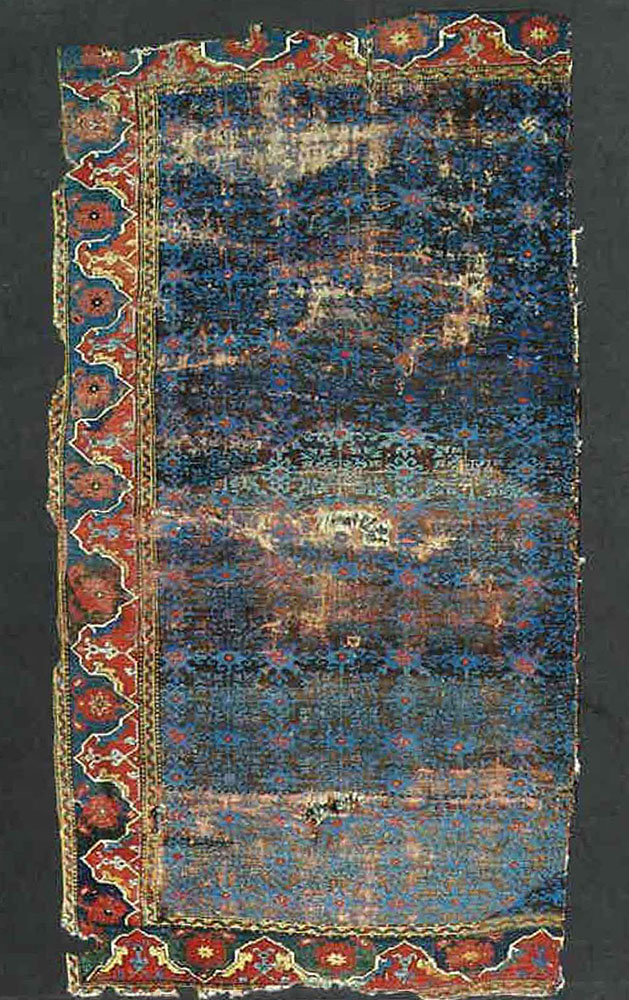Ushak carpet, West Anatolia, 16th century; 1.03 X 1.08m (3' 5" X 6' 10").
Cathedral of St. Catherine, Sion, Switzerland
This rug. which is
missing a border, has an untypical field design. (undoubtedly the largest
group of Turkish carpets woven between the 15th and late 17th century are
those attributed to the workshops of the Ushak region. Many hundreds of
examples of the best known patterns have survived, and were often copied
in other regions. Occasional examples with less familiar field designs are
nevertheless attributable to the Ushak workshops through minor features
such as border design, weave and colour. We believe this design to be
particularly rare, with few known related examples extant.
An
example, in the Metropolitan Museum of Art in New York,, has a similar but
more geometric small repeating field design, woven in two main colours and
two secondary ones, and a similar primary border to that in the Sion
carpet. This particular border design first appears on carpets of the
second half of the 16th century, and is more frequently found on those
examples with the Star Ushak design.
|


